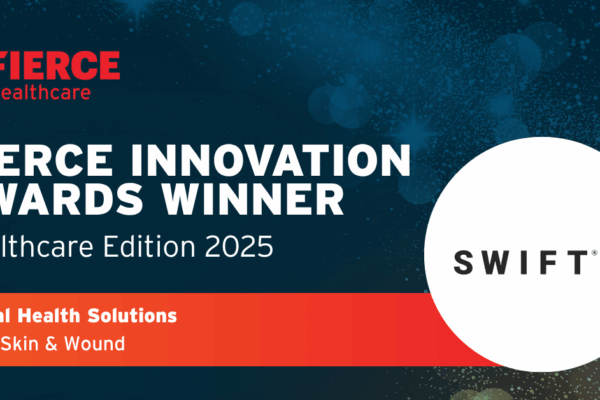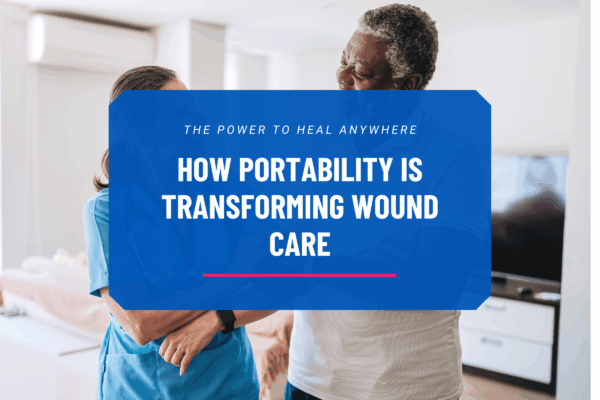Patient engagement is a critical element of wound care, and Swift’s Skin and Wound app helps deliver that engagement. With better visibility, patients can more clearly understand why wound care is essential. Here’s how understanding leads to better outcomes.
The struggle to engage patients in their own care
When patients become disengaged, their wound care prognosis suffers. Conversely, when patient engagement increases, wound care outcomes improve. Because Swift Skin and Wound lets patients see wound progression, comparing measurements and images of wound healing over time, patients have more reasons to be interested in their own care.
The imagery that’s at the heart of Swift Skin and Wound makes it easy for care providers to have meaningful interactions with patients about their wounds. When Bianca Salazar, Director of Nursing at Americare San Antonio, pulled out a paper ruler to measure a patient’s wound, the patient was disparaging about this low-tech wound care option. Hoping for a better outcome, Bianca placed the Swift HealX near the patient’s wound and took the picture, then showed the patient the clarity and quality of the picture and the measurements, and the patient understood. His eyes lit up, and on Bianca’s next visit, he insisted on seeing the progress of his wound. Swift’s ghosting overlay showed a definite progression, and it was eye-opening to the patient. “That’s the coolest thing I’ve seen,” he said.
Not every wound is visible
One of the challenges of wound care is that wounds—especially in their early stages—aren’t always easy to identify. Jennifer DeMaris, Director of Clinical Services at Select Home Care, points out that patients often dismiss early warnings, thinking their skin is just a little red, and everyone gets that sometimes. And although telemedicine has transformed healthcare during the pandemic, it’s also had an impact on wound care, because it isn’t easy for PCPs to assess patients for wounds when only their heads are visible on a video call. While every agency should be doing skin checks, with Swift Skin and Wound, care providers can take wound care a step further and say to patients, “This is what your skin really looks like. This is a stage one wound, going to a stage two. Let’s head this off before it gets started.”
How Swift helped an elderly patient regain her autonomy
Another challenge facing care providers is when wounds are located in places that patients simply can’t see. The Swift app gives patients a better view of their wound, enabling them to take more responsibility, or at least a more pronounced role, in their own care.
Jennifer DeMaris recalls getting a call from an elderly patient on a holiday weekend, and hearing that the patient’s dressing had fallen off. The patient was living in a lockdown facility because of COVID, and had no family able to visit, and no other resources available. This patient was 93 years old, healthy and independent, right up until she fell one day while washing dishes, resulting in a broken hip and a fractured kneecap. The patient then ended up in the hospital, where just about anything that could go wrong, did. When she was finally discharged, she had a pressure ulcer on her right heel. And because the patient was 93, and didn’t believe in going barefoot, she had trouble keeping the dressing on.
When Jennifer visited this patient, she found a woman who was really interested in her care, so she took a photo of her wound to show her. Of course, with a broken hip, the patient couldn’t bend her leg or put her foot up to see the wound! But with the photo, the patient finally understood what everyone was doing down there, and why her foot hurt so much.
By using Swift, Jennifer was able to show this patient how her wound was progressing. She was even able to use it to teach the patient how to cut a dressing, place it on the wound, and monitor her progress on her own, using her own cell phone. The patient didn’t have Swift’s app, but having seen what Jennifer was doing and how her wound was progressing, she was able to use her own phone to do something similar. Jennifer recalls, “She was so excited when she finally got the healed status, she sent the news to everybody. She was so proud! And then other residents at the ALS started asking for help too. That was a great experience. This patient learned something new, and it helped her retain her dignity and a sense of autonomy, which are priceless at any age.”
Swift Skin and Wound isn’t just a high-tech tool for healthcare providers. By giving patients a better understanding of their wounds, our solution also leads to better patient relationships, satisfaction, and engagement in their own care. The result? Better wound care outcomes.





